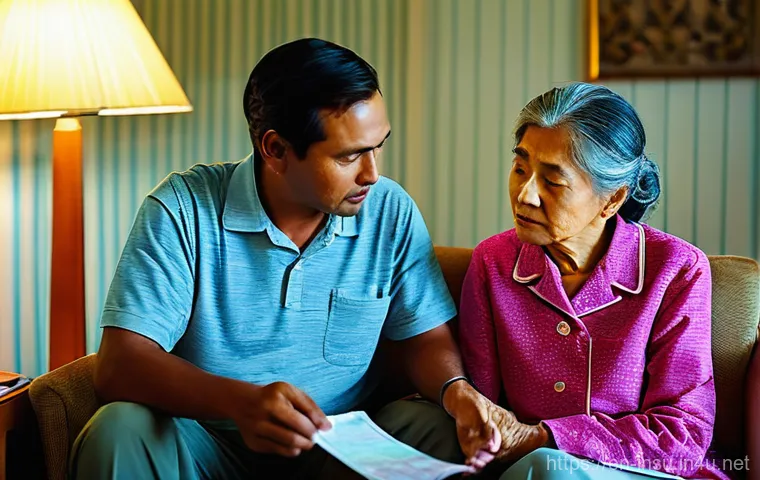That exhilarating moment when you book a trip, feeling the thrill of a new adventure just around the corner, is truly unbeatable. Yet, if you’re like me, a tiny voice in the back of your head immediately wonders, “What if something goes wrong?” Let’s be real: the world of travel has changed so much lately.
We’re talking about rising costs for almost everything, from flights to accommodations, and then there’s the unpredictability of extreme weather events, which seem to pop up more frequently than ever before, messing with even the best-laid plans.
It’s not just about a lost suitcase anymore; we’re seeing more disruptions, from unexpected health emergencies to flight cancellations due to unforeseen natural disasters.
I’ve personally navigated a few travel hiccups over the years, and trust me, having the right travel insurance made all the difference between a minor setback and a full-blown nightmare.
It’s no longer a nice-to-have; it’s an absolute must in today’s dynamic travel landscape. Especially with the rise of digital nomad lifestyles, the need for flexible, comprehensive policies that cover everything from your valuable work tech to mental health support on the go is more critical than ever.
Many insurance providers are really stepping up their game, leveraging AI for hyper-personalized plans and streamlined claims, so choosing wisely can feel a bit overwhelming.
But don’t you worry, I’ve done the digging to help you understand the ins and outs. Let’s dive into how to pick the perfect travel insurance for your next journey, ensuring you get comprehensive protection and complete peace of mind.
Beyond the Basics: Unpacking Different Policy Types

When I first started traveling, I figured all travel insurance was pretty much the same. Boy, was I wrong! It turns out there’s a whole world of policies out there, each designed for different types of adventures and travelers. It’s not a one-size-fits-all situation anymore, especially with how diverse our travel styles have become. For instance, a quick weekend getaway to a neighboring city might only need basic coverage for medical emergencies and trip cancellations. But if you’re planning a multi-month backpacking trip across Southeast Asia, or perhaps an epic ski adventure in the Alps, you’ll need something much more robust. Understanding these distinctions is the first step to truly getting your money’s worth and ensuring you’re not caught off guard. I’ve seen friends get caught out because they opted for the cheapest option, only to find it didn’t cover their specific activities or the duration of their trip. Trust me, spending a little extra time upfront exploring your options can save you a world of headaches, and potentially a fortune, down the line. It’s about aligning your policy with your unique journey.
The Single-Trip vs. Annual Debate
This is often the first fork in the road for many travelers. If you’re someone who only takes one big trip a year, a single-trip policy makes perfect sense. It’s tailored specifically to that one journey, covering your dates and destination with precision. However, if you’re like me and find yourself hopping on a plane several times a year for work or leisure, an annual multi-trip policy can be a game-changer. Not only can it be more cost-effective in the long run, but it also saves you the hassle of buying a new policy every time you book a flight. Just make sure the annual policy covers all your planned destinations and trip durations throughout the year. I personally switched to an annual plan a few years ago, and the peace of mind knowing I’m always covered, no matter how spontaneous a trip becomes, is invaluable.
Specialized Coverage for the Modern Explorer
Gone are the days when travel insurance only covered lost luggage and hospital bills. Nowadays, policies are adapting to our evolving lifestyles. Thinking of hitting the slopes? Look for winter sports coverage. Planning to scuba dive or bungee jump? Adventure sports add-ons are a must. And for my fellow digital nomads, listen up: there are now specific policies designed to cover your valuable tech gear, provide mental health support, and even offer remote medical consultations. I recently heard a story about a digital nomad whose laptop was stolen in a co-working space, and thankfully, their specialized policy covered the replacement. It just goes to show how crucial it is to consider what unique aspects of your trip might need extra protection.
Weighing the What-Ifs: Understanding Coverage Limits and Exclusions
Okay, so you’ve got a handle on policy types, but now comes the nitty-gritty: what exactly *is* covered, and more importantly, what isn’t? This is where many people, myself included in my early travel days, tend to skim over the details. We just assume “full coverage” means everything, right? Wrong. Every policy has limits – a maximum amount they’ll pay out for various categories like emergency medical care, trip cancellation, or lost belongings. For example, if your emergency medical limit is $100,000, but you face a major accident in a country with high healthcare costs, you could still be on the hook for a substantial amount. I once had a friend who needed emergency dental work abroad, and while her policy covered it, the limit was far lower than the actual cost, leaving her with an unexpected bill. It’s not about fear-mongering; it’s about being realistic and understanding the potential financial impact of different scenarios.
Deciphering the Deductibles
Just like with car or home insurance, travel insurance often comes with a deductible, also known as an excess. This is the amount you’ll have to pay out of your own pocket before your insurance kicks in. A higher deductible usually means a lower premium, and vice-versa. It’s a balancing act. For smaller claims, like a minor medical issue or a slightly delayed bag, a high deductible might mean it’s not even worth claiming. But for major incidents, it can be a small price to pay for significant coverage. When I’m choosing a policy, I always weigh the premium savings against the potential out-of-pocket expense. Sometimes, paying a little more upfront for a zero-deductible policy gives me greater peace of mind, especially when traveling with family.
The Devil’s in the Details: Exclusions to Watch Out For
This is perhaps the most critical part of reading your policy document. Exclusions are circumstances or events that your insurance simply won’t cover. Common exclusions include pre-existing medical conditions (unless declared and accepted), claims arising from intoxication or reckless behavior, war, terrorism, and natural disasters in areas where warnings were already in place. If you’re planning an adventurous trip, check if activities like mountaineering or motorcycling are excluded. I’ve heard horror stories of travelers getting into accidents during activities they thought were covered, only to find out they were explicitly excluded. Always, always, double-check these sections. If you’re unsure, call the provider and ask directly. It’s better to be overly cautious than regretful.
The Price Tag Puzzle: How to Get Value for Your Money
Let’s talk money, because let’s face it, nobody wants to pay more than they have to. When it comes to travel insurance, the cheapest option isn’t always the best, and the most expensive isn’t necessarily overkill. It’s about finding that sweet spot where comprehensive coverage meets a reasonable price. Think of it as an investment in peace of mind rather than just another expense. What I’ve learned over the years is that comparing policies isn’t just about looking at the headline price; it’s about understanding what that price actually buys you. You might find two policies with similar premiums, but one offers significantly higher medical coverage or a lower deductible. It truly pays to do your homework here, because getting the right value means aligning the cost with the risk you’re willing to mitigate.
Comparing Apples to Apples (and Oranges)
With so many providers out there, the options can feel overwhelming. My go-to strategy is to use comparison websites. They allow you to input your travel details and get quotes from multiple insurers side-by-side. But here’s the trick: don’t just sort by price. Dig into the details of each policy. Look at the maximum coverage limits for medical, cancellation, and baggage. Check the deductibles. Are there any hidden fees? Do they offer 24/7 emergency assistance? I usually create a small checklist of my non-negotiable coverage needs and then compare how each policy stacks up. It’s like shopping for a new gadget; you wouldn’t just buy the cheapest one without checking its features, right? The same applies here.
Bundling, Benefits, and Loyalty Programs
Sometimes, you can snag a better deal without sacrificing coverage. Check if your credit card offers any complimentary travel insurance – many premium cards do! Just be sure to read their terms and conditions, as the coverage might be basic or only apply when you’ve paid for the trip with that specific card. Another tip is to see if bundling insurance with other travel bookings (like flights or accommodation) offers a discount, though this isn’t always the best option, so compare carefully. Some airlines or travel agencies might offer it, but it often lacks the flexibility and comprehensive nature of a dedicated travel insurance policy. Loyalty programs with insurance providers can also sometimes yield discounts. I always check my current credit card benefits before even starting my search, as it has saved me a few bucks in the past.
Navigating the Claim Game: What You Need to Know Before Trouble Strikes
Let’s be real: no one wants to think about making a claim when they’re daydreaming about white sand beaches or ancient ruins. But when something goes wrong, the claims process can feel like a daunting maze if you’re not prepared. From my own experience, and unfortunately, from watching friends struggle, I can tell you that the key to a smooth claim is knowing what to do *before* you even need to do it. It’s about gathering documentation, understanding the procedures, and communicating effectively. A little foresight here can turn a stressful situation into a manageable one, ensuring you get the reimbursement you’re entitled to without unnecessary delays or headaches. It’s truly a testament to the adage, “an ounce of prevention is worth a pound of cure.”
The Golden Rules of Documentation
When you need to make a claim, documentation is your absolute best friend. Seriously, I can’t stress this enough. For any medical emergency, keep all receipts, medical reports, and discharge papers. If your flight is delayed or canceled, get written confirmation from the airline stating the reason. For lost or stolen items, file a police report immediately and keep a copy. Photograph damaged luggage. The more evidence you have, the smoother your claim will be. I keep a dedicated digital folder for each trip, storing copies of my passport, tickets, booking confirmations, and of course, my insurance policy. It’s a habit that has saved me significant stress and time when unexpected events have occurred.
Timelines and Communication: Don’t Delay!
Most insurance policies have strict timelines for reporting incidents and submitting claims. Don’t wait until you’re back home to start the process, especially for significant events. Contact your insurer’s 24/7 emergency assistance line as soon as possible, especially for medical emergencies or major disruptions. They can often guide you through the process, recommend local facilities, or even pre-approve treatments. Always keep a record of who you spoke to, when, and what was discussed. I usually make a note in my phone immediately after any call with an insurer. Clear, prompt communication can significantly expedite your claim and prevent any issues down the line related to delayed notification.
Digital Nomad Deep Dive: Protecting Your Remote Lifestyle

For my fellow digital nomads and remote workers, travel insurance isn’t just about protecting a vacation; it’s about safeguarding your entire livelihood. Our unique lifestyle comes with its own set of risks and needs that a standard holiday policy simply won’t cover. We’re often traveling long-term, carrying expensive tech, and potentially working in places with limited healthcare access. This isn’t just about a lost passport; it’s about ensuring your ability to earn an income isn’t jeopardized by an unexpected event. I’ve personally navigated the complexities of finding insurance that truly understands the nomad lifestyle, and let me tell you, it requires a different approach than a typical tourist. It’s about finding a policy that moves with you, adapts to your changing locations, and understands the tools of your trade.
| Coverage Area | Standard Travel Insurance | Digital Nomad Insurance |
|---|---|---|
| Medical Emergencies | Typically short-term, acute care | Longer-term coverage, mental health support, remote consultations |
| Electronics/Gear | Basic coverage for lost luggage (limited value) | Higher limits for laptops, cameras, phones; specific tech coverage |
| Trip Cancellation | Covers pre-paid, non-refundable expenses for a single trip | May include options for flight changes, emergency return for extended stays |
| Duration of Coverage | Usually up to 30-90 days per trip | Often offers continuous coverage for 6 months to a year or more |
| Repatriation | Standard medical repatriation | Comprehensive medical and potentially non-medical repatriation options |
Beyond Basic Health: Specialized Medical Needs
As digital nomads, we might spend months, or even years, away from our home country. This means our healthcare needs extend beyond just emergency treatment for a broken leg. Many nomad-specific policies offer more comprehensive health coverage, including routine check-ups, specialist visits, and mental health support. I’ve found that some even include telehealth services, which are incredibly useful when you’re in a remote location and need a quick consultation with a doctor who speaks your language. This kind of holistic approach to health is a game-changer when you don’t have a local GP to rely on. It’s not just about patching you up; it’s about supporting your well-being while you’re constantly on the move.
Protecting Your Portable Office
Our laptops, cameras, hard drives, and other tech gadgets aren’t just personal items; they’re our workplaces. Losing them, or having them damaged, can be devastating to our income. Standard travel insurance often has very low limits for electronics, sometimes barely covering the cost of a new phone, let alone a high-end laptop. Digital nomad insurance, however, often provides much higher coverage for these essential tools. I once had a scare when my bag containing my laptop was almost snatched, and ever since, I’ve made sure my policy specifically covers my tech at its true value. It’s an investment in your career, ensuring that if the worst happens, you’re not out of commission financially.
The Fine Print Fortress: Why Reading the Details Matters
I know, I know. Reading insurance documents can feel like trying to decipher an ancient scroll – full of jargon, tiny fonts, and clauses that seem designed to confuse. But trust me on this: ignoring the fine print is like traveling without your passport. It might seem tedious, but it’s where all the crucial information lives. This isn’t just legal mumbo jumbo; it defines exactly what you’re paying for and what you can expect when things go south. I’ve learned the hard way that a quick skim just won’t cut it. Taking the time to really understand the terms and conditions can save you from massive disappointments and unexpected financial burdens down the road. It’s your fortress of protection, and knowing its walls is essential.
Understanding “Reasonable” and “Customary” Costs
You might see phrases like “reasonable and customary costs” in your medical coverage. What does that actually mean? Essentially, the insurer will cover costs up to what they deem typical for a particular service or treatment in that specific geographical area. This can be a point of contention if you end up in an expensive private clinic when a more affordable, equally competent public hospital was available. It’s a subtle but important detail. If you’re traveling to a country known for high medical costs, understanding this clause and perhaps opting for a higher overall medical limit can be incredibly wise. Don’t be afraid to ask your provider for examples or clarification on what they consider “reasonable” in your intended destinations.
The “Duty of Disclosure” and How It Impacts You
When you apply for travel insurance, you have a “duty of disclosure.” This means you’re obligated to provide accurate and complete information about yourself, your health, and your travel plans. This includes pre-existing medical conditions, dangerous activities you might engage in, or the true purpose of your trip. If you withhold information, or provide inaccurate details, your insurer could reject a claim, or even void your policy entirely, leaving you completely exposed. It’s not about tricking the system; it’s about being honest upfront so your policy is truly valid. I always take extra care when filling out medical questionnaires, making sure I disclose everything, even if it feels minor. It’s better to be safe than sorry when your financial well-being is on the line.
Emergency Readiness: Accessing Assistance When You Need It Most
Imagine this: you’re in a foreign country, it’s the middle of the night, and you or a travel companion suddenly falls ill. Or perhaps your passport is stolen, and you don’t know who to call. In these high-stress moments, having immediate access to help can be the difference between panic and problem-solving. This is where the emergency assistance services included with most travel insurance policies really shine. It’s not just about reimbursement later; it’s about having a lifeline *now*. In my opinion, a truly great travel insurance policy isn’t just about what it covers financially, but the human support it offers when you’re at your most vulnerable. It’s the silent guardian angel that truly makes travel safer.
Your 24/7 Lifeline: Emergency Hotlines
Every reputable travel insurance provider offers a 24/7 emergency assistance hotline. This number should be stored in your phone, written down, and perhaps even shared with a travel companion or family back home. These services can do so much more than just log a claim; they can provide medical advice, arrange for emergency medical evacuation, direct you to English-speaking doctors or hospitals, help replace lost travel documents, and even act as a liaison with your family. I’ve personally used these hotlines for less severe issues, like needing advice on local medical facilities, and the reassurance of speaking to a knowledgeable person was immense. Don’t hesitate to use them; that’s what they’re there for!
Medical Evacuation and Repatriation: The Ultimate Safety Net
These two terms might sound scary, but they represent some of the most crucial protections a comprehensive policy offers. Medical evacuation covers the cost of transporting you to the nearest appropriate medical facility if you can’t be treated adequately where you are. Repatriation covers the cost of bringing you home, either medically if you’re too ill to travel commercially, or even the repatriation of remains in the most tragic circumstances. These costs can run into hundreds of thousands of dollars, making this coverage absolutely non-negotiable, especially for adventure travel or trips to remote areas. It’s a sobering thought, but knowing this ultimate safety net is in place provides an unparalleled level of peace of mind, allowing you to truly enjoy your adventures without a nagging worry about the absolute worst-case scenario.
Wrapping Up
Whew, we’ve covered a lot, haven’t we? It might feel like a mountain of information, but trust me, understanding travel insurance doesn’t have to be overwhelming. For me, it’s always boiled down to equipping myself with the right knowledge, not just to avoid pitfalls, but to truly embrace every adventure with confidence. Thinking about these details beforehand means less stress and more enjoyment when you’re out there exploring the world. My hope is that this deep dive empowers you to make smarter choices for your next journey, ensuring those unexpected moments don’t become trip-ruining nightmares. Here’s to safe, unforgettable, and well-insured travels!
Useful Information to Know
Here are a few quick reminders and pro tips I’ve picked up over my years of globetrotting:
1. Always check your existing coverage first. Many premium credit cards offer some form of complimentary travel insurance, especially if you use them to book your flights or accommodation. While often basic, it’s a smart starting point to understand what you might already have before buying an additional policy. I once saved myself a small fortune by realizing my card offered robust rental car insurance, for instance!
2. Don’t underestimate international medical costs. A simple slip or unexpected illness abroad can quickly lead to astronomical hospital bills. Prioritize comprehensive medical coverage, including emergency medical evacuation. This isn’t just a suggestion; it’s a non-negotiable for me, particularly when I’m heading to places with varying healthcare standards or remote locations where medical transport is complex.
3. The Product Disclosure Statement (PDS) is your best friend. Yes, it’s dense and often feels like homework, but reading this document is absolutely crucial. It outlines every single detail, including what’s covered, what isn’t, limits, and exclusions. A quick read here can prevent countless headaches and ensure you’re not caught off guard by a technicality when you need to make a claim.
4. Keep your emergency contacts accessible. Store your insurance provider’s 24/7 emergency hotline number in multiple places: your phone, a physical piece of paper in your wallet, and perhaps even shared with a travel companion or a loved one back home. In a crisis, every second counts, and having immediate access to assistance can make all the difference.
5. Consider an annual multi-trip policy for frequent travel. If you’re someone who takes several trips a year, whether for leisure or work, an annual policy can be significantly more cost-effective and convenient than purchasing individual policies for each journey. It provides peace of mind, knowing you’re continuously covered for all your spontaneous adventures throughout the year without repeated hassle.
Key Takeaways
Ultimately, navigating the world of travel insurance is about making informed decisions tailored to your unique journey. Remember that while the cheapest policy might seem appealing, it rarely offers the robust protection you truly need. Prioritize comprehensive medical coverage and emergency evacuation, as these costs can be staggering. Always be honest and transparent when disclosing information, especially regarding pre-existing conditions, to ensure your policy remains valid. For digital nomads, a specialized policy is paramount to protect your livelihood and unique lifestyle. Furthermore, understand the claims process, keep meticulous documentation, and know how to reach your insurer’s emergency assistance. Taking the time to understand these details isn’t just about ticking a box; it’s about investing in the peace of mind that allows you to fully immerse yourself in the incredible experiences the world has to offer, knowing you’re truly covered.
Frequently Asked Questions (FAQ) 📖
Q: What exactly should I look for in a comprehensive travel insurance policy these days, especially with so much changing in the world?
A: This is such a critical question, and it’s one I ask myself every time I plan a trip! Honestly, what “comprehensive” means has really expanded. Beyond the classic trip cancellation or interruption that covers you if something unexpected throws a wrench in your plans before or during your journey, you absolutely need robust medical coverage.
Think about it: a sudden illness or accident abroad can lead to astronomical bills, especially in places like the USA where healthcare costs can easily run into hundreds of thousands of dollars.
So, make sure your policy covers emergency medical treatment, hospital stays, and, crucially, emergency medical evacuation. My personal experience has taught me that the peace of mind knowing you can be airlifted to a proper facility or even back home if necessary is priceless.
But it doesn’t stop there.
With extreme weather events becoming more frequent, you want a policy that specifically addresses natural disasters and adverse weather. This could mean coverage for trip delays, interruptions, or cancellations if a hurricane or blizzard derails your plans, but remember to buy it before a storm is named or forecasted.
Also, don’t overlook baggage loss, delay, or damage, and even personal liability. And for my fellow digital nomads, look for policies that understand your lifestyle.
Many traditional plans aren’t built for long-term, multi-country travel, so seek out those flexible options that cover your valuable tech and offer benefits like mental health support or even routine care if you’re truly living on the road.
Some providers are even using AI now to offer hyper-personalized plans, making sure you get exactly what you need without overpaying for things you don’t.
Q: How do I figure out which travel insurance is the best fit for my specific journey when there are so many options?
A: Oh, the paradox of choice! I totally get it – wading through countless policies can feel like another full-time job. What I’ve found works best is to really dissect your trip first, almost like you’re creating a persona for it.
Are you going on a quick, pre-paid beach getaway, or an epic six-month backpacking adventure across Southeast Asia? The type of trip, its duration, and your destination are huge factors.
For instance, a quick European city break will have different risk factors and, frankly, different costs than an adventure sports trip in a remote region.
Then, consider you.
Your age plays a role, as older travelers sometimes face higher premiums due to increased health risks. Do you have any pre-existing medical conditions?
Be completely honest about these – undisclosed conditions can invalidate your coverage when you need it most. Are you bringing expensive gear like cameras or laptops?
Make sure the baggage coverage limits align with the value of your belongings. Also, think about your own comfort level with risk. If you’re someone who stresses about every little “what if,” a more comprehensive, slightly pricier policy might be worth it for the sheer peace of mind.
Many platforms allow you to compare plans side-by-side, which is a lifesaver. And don’t shy away from providers leveraging AI – they can often tailor plans to your specific profile and itinerary with impressive accuracy, helping you cut through the noise to find your perfect match.
Q: Is travel insurance truly worth the investment, or is it just another added expense I could probably skip?
A: This is a question I hear a lot, and honestly, for years I probably leaned towards “skip it” myself, especially for shorter trips. But after a few unexpected curveballs on the road – a nasty stomach bug that landed me in a clinic in Mexico, a flight cancellation that left me scrambling for a last-minute hotel, and a suitcase that decided to take its own detour to a different continent – my perspective completely shifted.
It’s no longer just a “nice-to-have”; it’s an absolute necessity in today’s unpredictable travel landscape.
Think of it this way: you invest hundreds, maybe thousands, in flights, accommodations, and experiences.
Travel insurance is a relatively small percentage of that total, usually just a few percent of your trip cost, but it acts as a financial safety net for that entire investment.
The cost of an emergency medical evacuation, for example, can be tens of thousands of dollars, or even more, easily dwarfing the cost of any premium. Beyond the big emergencies, it covers those frustrating but costly disruptions like flight delays (reimbursing for meals or an unexpected overnight stay), lost luggage (helping replace essentials), and even trip interruptions that force you to cut your adventure short.
The current trends in 2025 show a significant increase in medical coverage adoption, with people prioritizing health protection more than ever, and the demand for robust, adaptable policies is soaring.
So, from my personal experience, the peace of mind alone is worth every penny, ensuring those travel hiccups don’t turn into financial disasters or ruin your entire journey.






